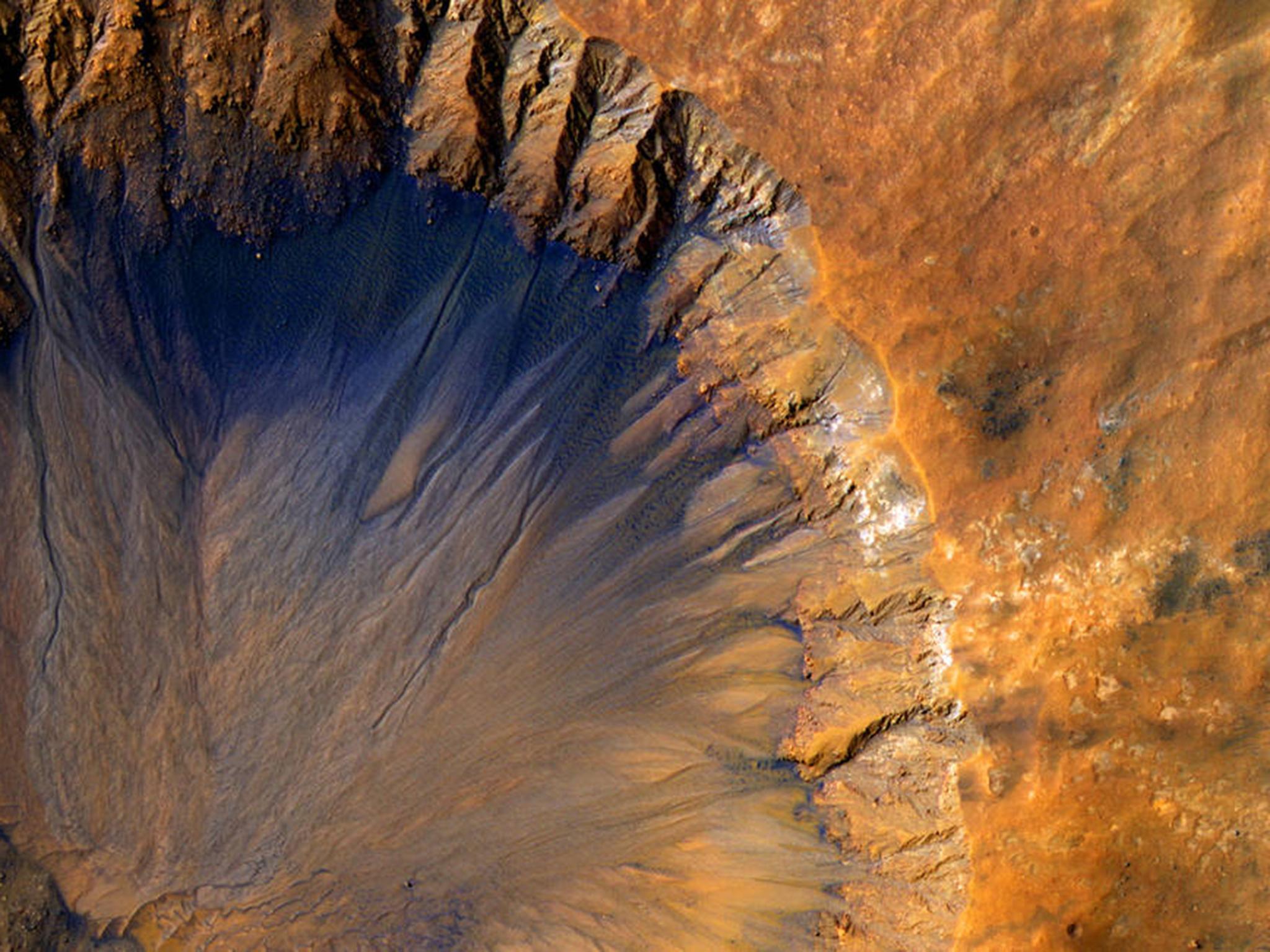Mars is going to get its own ring when its moon gets ripped apart by gravity, scientists say
Phobos, the largest of the two moons around the Red Planet, is getting gradually closer — and will one day slam into it

Your support helps us to tell the story
From reproductive rights to climate change to Big Tech, The Independent is on the ground when the story is developing. Whether it's investigating the financials of Elon Musk's pro-Trump PAC or producing our latest documentary, 'The A Word', which shines a light on the American women fighting for reproductive rights, we know how important it is to parse out the facts from the messaging.
At such a critical moment in US history, we need reporters on the ground. Your donation allows us to keep sending journalists to speak to both sides of the story.
The Independent is trusted by Americans across the entire political spectrum. And unlike many other quality news outlets, we choose not to lock Americans out of our reporting and analysis with paywalls. We believe quality journalism should be available to everyone, paid for by those who can afford it.
Your support makes all the difference.One of Mars’ moons is getting closer to the Red Planet and could create a new ring for it, according to scientists.
Phobos, its biggest moon, is floating towards Mars and will eventually become too close to it and get ripped apart, according to scientists. When it does it will get its own ring.
That will make it the first rocky planet in our solar system to have one. The rest are the gas giants: Jupiter, Saturn, Uranus and Neptune.
Scientists have been watching Phobos and found that it is getting 1.8cm closer to Mars per year. That means that in 20 to 70 million years — depending on conditions in space — it will start touching the edge of Mars’s atmosphere.
It isn’t clear what will happen when it gets there. It could either break up and get ripped apart as it orbits, or it could slam into Mars.
That isn’t going to happen for as many as 40 million years. But once it starts happening, the moon will break up quickly — Phobos appears to be made of weak and already-damaged material, which will probably break up under the strain of the tidal forces.
That broken-up moon will form a Martian ring that will last for millions of years. It will probably be of a similar density to that of Saturn’s, the scientists say.
Anything big that survives that process will probably fall onto Mars.
Join our commenting forum
Join thought-provoking conversations, follow other Independent readers and see their replies
Comments